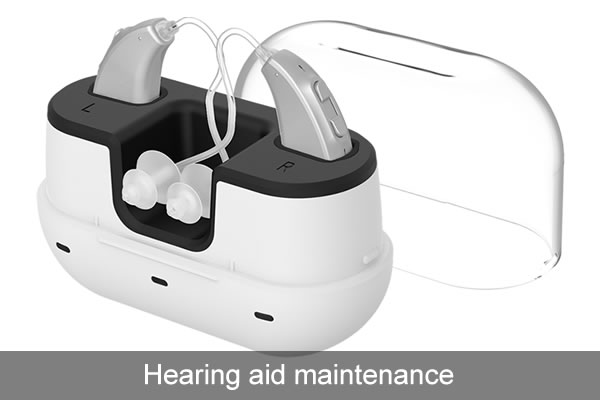- Home
- Hearing Loss
- Audiology
Hearing aid maintenance
2021-07-06Information about hearing aid maintenance, how to clean the hearing aid microphone, etc.
Hearing aids require special attention to ensure their proper functioning. You should have special cleaning tools for hearing aids and drying tanks provided by hearing aid companies. If so, please use it every night. Rechargeable BTE hearing aids and ITC hearing aids also require maintenance. If you need to replace parts or purchase consumables, please contact your audiologist to confirm whether these consumables can be shipped to your home. Remember these tips to keep your hearing aids in good working order.
Perform visual inspections every day. Start from the part that directly enters the ear, and take a closer look at the entire hearing aid body. Check whether the earwax may prevent the sound from entering normally. The hearing aid body or tube should also be checked for cracks.

If you are using custom-made hearing aid, check the cerumen cap-if you see a lot of earwax, this is a good time to replace it!
If you are using a open-fit hearing aid, please check whether there is earwax on the earplugs of the hearing aid. If there is a large amount of earwax, please find out how to clean or replace it from the user manual. Please check whether the sound tube is broken or needs to be replaced. If it is a thin tube back-to-ear machine (BTE-OE), please also remove the earplugs and clean the sound tube. You can use fishing line to clean it.
Check the battery. Hearing aid batteries should be kept for at least 5 to 10 days, depending on the hearing aid model, battery size and the use of the connectivity function (Bluetooth). If you have a battery tester at home, please check whether the battery is sufficient to make the hearing aid work with the best performance; if you do not have a battery tester, it is recommended that you record the battery usage time. And make sure to do the following:
Please carry spare batteries with you and store them in a cool and dry place (not the refrigerator)
For rechargeable hearing aids: such as rechargeable cic hearing aids. Please reserve enough recommended charging time to enable the hearing aid to be fully charged. If necessary, you can check the relevant instructions in the user manual. Record the length of time the hearing aid has been used. If you find that the charging status is not as expected, please contact your optician.
Please clean the hearing aid regularly with a soft dry cloth. Please check hearing aids, earmolds, earplugs or pipes for dirt and earwax.
For users of hearing aids using customized ear molds, please note that they can be removed from the hearing aids, cleaned with warm (rather than hot) soapy water, and then washed clean. Make sure the earmould is dry before re fitting it to the hearing aid.
Circular earplugs used with open-fit hearing aids should be cleaned with dry cloth or special tools provided by the fitting engineer. Some fitters will provide replacement earplug spare parts. If your earplug is discolored, broken or damaged, please remove it and replace it with a new one and connect it to the hearing aid.
Minimize moisture in hearing aids. The drying equipment (drying box) can prevent moisture from accumulating inside the hearing aid and prolong its service life. Please remove the battery before putting the hearing aid into the storage container. If you live in a very humid area, please ask your fitter if you use proper drying equipment for your hearing aid. If a simple jar or dryer is not enough, a more advanced dryer can be used.
Latest
Audiology













All 0 comments